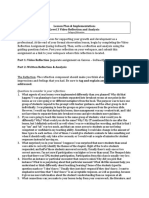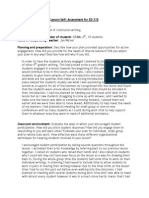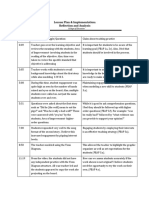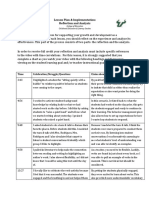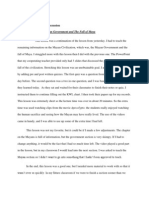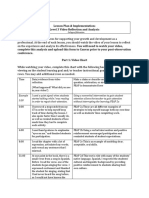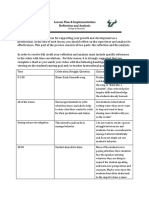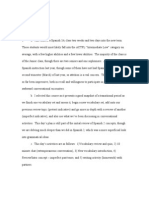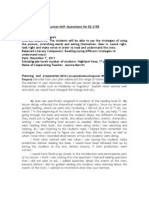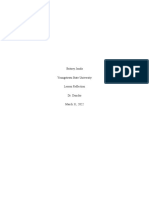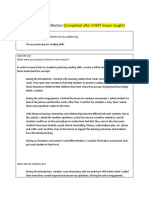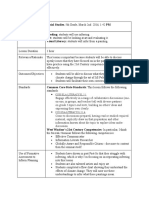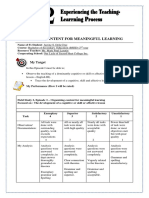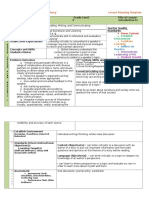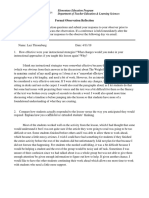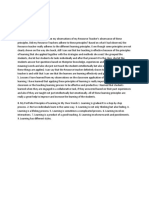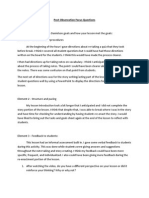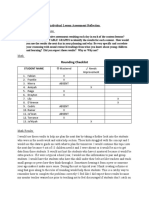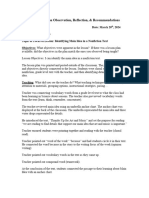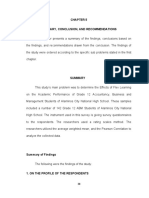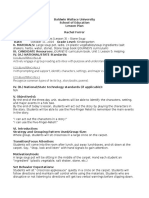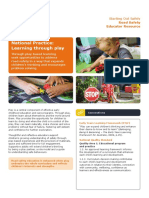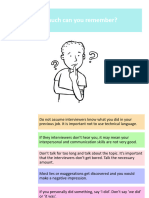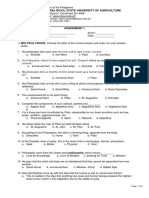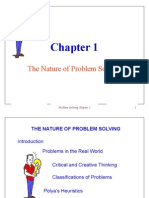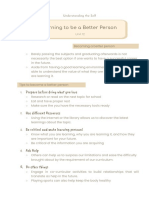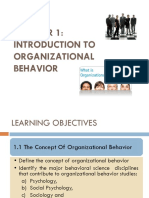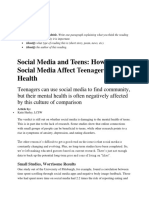0% found this document useful (0 votes)
168 views4 pagesLesson Plan & Implementation: Reflection and Analysis: College of Education
This document provides guidance for reflecting on and analyzing a lesson plan implementation. It emphasizes the importance of reflection for professional growth. The reflection and analysis should include three parts: a reflection on feelings and impressions, an analysis of student learning supported by evidence, and responses to content-focused questions. Video of the lesson should be reviewed and time-stamped notes taken on celebrations, struggles, and questions along with claims about teaching practices. The reflection questions provided prompt thinking about differences from the planned lesson, changes for next time, surprises, and connections to coursework. The analysis requires making 2-3 evidence-based claims about the extent to which learning objectives were met and how this is known.
Uploaded by
api-477155275Copyright
© © All Rights Reserved
We take content rights seriously. If you suspect this is your content, claim it here.
Available Formats
Download as DOCX, PDF, TXT or read online on Scribd
0% found this document useful (0 votes)
168 views4 pagesLesson Plan & Implementation: Reflection and Analysis: College of Education
This document provides guidance for reflecting on and analyzing a lesson plan implementation. It emphasizes the importance of reflection for professional growth. The reflection and analysis should include three parts: a reflection on feelings and impressions, an analysis of student learning supported by evidence, and responses to content-focused questions. Video of the lesson should be reviewed and time-stamped notes taken on celebrations, struggles, and questions along with claims about teaching practices. The reflection questions provided prompt thinking about differences from the planned lesson, changes for next time, surprises, and connections to coursework. The analysis requires making 2-3 evidence-based claims about the extent to which learning objectives were met and how this is known.
Uploaded by
api-477155275Copyright
© © All Rights Reserved
We take content rights seriously. If you suspect this is your content, claim it here.
Available Formats
Download as DOCX, PDF, TXT or read online on Scribd
/ 4




